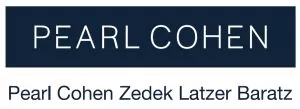The U.S. Supreme Court ruled Monday (June 24) that a Lanham Act ban on the registration of “scandalous” trademarks such as “Fuct” violates the First Amendment, less than two years after striking down a similar rule against registration of racist terms. In Iancu v. Brunetti, case number 18-302, the Court, in a 6-3 vote, affirmed a Federal Circuit decision, finding that the relevant statutory provision, 15 U. S. C. §1052(a), prohibiting registration of trademarks that “[c]onsist[ ] of or comprise[ ] immoral[ ] or scandalous matter,” was an unconstitutional form of discrimination against viewpoint.
The Court’s earlier ruling, in Matal v. Tam, 582 U.S. ___, 137 S. Ct. 1744 (2017), struck down a similar Lanham Act ban on "disparaging" trademarks such as "Redskins." There, the Court held that (i) if a trademark registration bar is viewpoint based, it is unconstitutional; and (ii) the disparagement bar was viewpoint based (and thus unconstitutional).
In this case, the Court found that the Lanham Act ban on registration of “immoral or scandalous” marks similarly discriminates on the basis of viewpoint and thus violates the First Amendment.
By way of background, Brunetti had founded a clothing line using the trademark FUCT. Per Brunetti, the mark (also the brand name) is pronounced as four letters, one after the other: F-U-C-T. However, the Court recognized the more common reading of the mark, noting that it was this reading that caused problems in the Trademark Office. Rejecting Brunetti’s application to register the mark, the Examining Attorney found the proposed mark “a total vulgar” and “therefore[] unregistrable.” Subsequently, the Trademark Trial and Appeal Board said the mark was “highly offensive” and “vulgar,” and that it had “decidedly negative sexual connotations.” Taking into consideration Brunetti’s use of the mark, the Board found that his website and products contained imagery, near the mark, of “extreme nihilism” and “antisocial” behavior. In that context, per the Board, the mark communicated “misogyny, depravity,[and] violence.”
Brunetti appealed the Board’s ruling to the Federal Circuit, challenging the “immoral or scandalous” registration bar. The Federal Circuit found that the registration bar violated the First Amendment. The Supreme Court granted certiorari.
Justice Kagan, writing for the majority, began with a consideration of Matal v. Tam and the “viewpoint-based” threshold question for a bar to registration of a trademark. Applying the same rationale here, the Court found that the “immoral or scandalous” bar also was viewpoint based, saying: “The PTO, for example, asks whether the public would view the mark as ‘shocking to the sense of truth, decency, or propriety’; ‘calling out for condemnation’; ‘offensive’; or ‘disreputable.’ Using those guideposts, the PTO has refused to register marks communicating ‘immoral’ or ‘scandalous’ views about (among other things) drug use, religion, and terrorism. But all the while, it has approved registration of marks expressing more accepted views on the same topics.”
The Trademark Office argued that the ban scandalous trademarks should be treated differently than that on disparaging trademarks, but the Court disagreed: “The statute, on its face, distinguishes between two opposed sets of ideas: those aligned with conventional moral standards and those hostile to them; those inducing societal nods of approval and those provoking offense and condemnation. The statute favors the former, and disfavors the latter.” Per the Court: “The statute as written does not draw the line at lewd, sexually explicit, or profane marks… It covers the universe of immoral or scandalous [ ] material. Whether or not lewd or profane… To cut the statute off where the Government urges is not to interpret the statute Congress enacted, but to fashion a new one.”
Chief Justice John Roberts and Justices Stephen Breyer and Sonia Sotomayor dissented in part from the ruling. Briefly, the dissents agreed that the “immoral” portion of the registration bar was invalid as a result of viewpoint bias. However, the dissenting Justices argued that the “scandalous” portion of the bar was susceptible to a narrowing construction, i.e., bar registration of marks, not because of the ideas they convey, but because of their mode of expression—marks that are obscene, vulgar, or profane.
Justice Kagan addressed the dissenting argument in a footnote in the Court’s opinion, saying that “scandalous” is not ambiguous, but merely broad. Per Justice Kagan:
Remember that the dictionaries define [scandalous] to mean offensive, disreputable, exciting reprobation, and so forth. Even if hived off from “immoral” marks, the category of scandalous marks thus includes both marks that offend by the ideas they convey and marks that offend by their mode of expression. And its coverage of the former means that it discriminates based on viewpoint. We say nothing at all about a statute that covers only the latter—or, in the Government’s more concrete description, a statute limited to lewd, sexually explicit, and profane marks. Nor do we say anything about how to evaluate viewpoint-neutral restrictions on trademark registration—because the “scandalous” bar (whether or not attached to the “immoral” bar) is not one.
The content of this article is intended to provide a general guide to the subject matter. Specialist advice should be sought about your specific circumstances.

